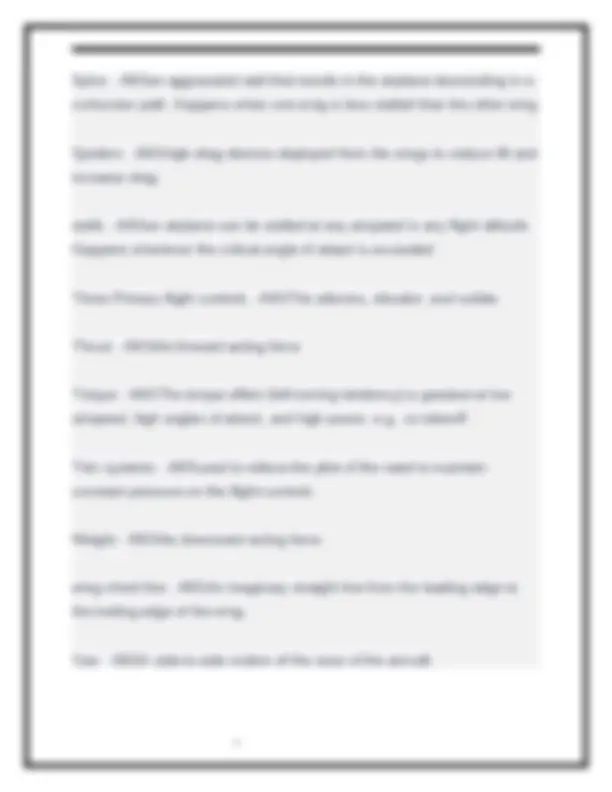



Study with the several resources on Docsity

Earn points by helping other students or get them with a premium plan


Prepare for your exams
Study with the several resources on Docsity

Earn points to download
Earn points by helping other students or get them with a premium plan
Community
Ask the community for help and clear up your study doubts
Discover the best universities in your country according to Docsity users
Free resources
Download our free guides on studying techniques, anxiety management strategies, and thesis advice from Docsity tutors
Private Pilot Ground School Stage One Exam Gleim 2025-2026. Questions & Correct Answers. Graded A
Typology: Exams
1 / 3

This page cannot be seen from the preview
Don't miss anything!


a Aerodynamic forces – ANS Weight, lift, thrust, drag Ailerons – ANS The controlling surface that regulates an aircraft's roll. Airplane stability - ANS an inherently stable airplane returns to its original condition (position or attitude) after being disturbed. Requires less effort to control Airplane turn - ANS The horizontal component of lift makes an airplane turn. Angle of attack - ANSthe angle between the wing chord line and the direction of the relative wind Bernoulli's Principle - ANSthe internal pressure of a fluid (liquid or gas) decreases at points where the speed of the fluid increases. High speed flow is associated with low pressure. Low speed flow is associated with high pressure. critical angle of attack - ANSthe point at which a plane stalls Drag - ANSthe rearward-acting force
Elevator - ANSThe controlling surface that regulates an aircraft's pitch. flaps - ANSattached to the trailing edge of the wing and are used during approach and landing to increase wing lift Ground effect - ANSThe result of the interference of the ground (or water) with the airflow patterns about an airplane. Lift - ANSthe upward-acting force Load factor - ANSrefers to the additional weight carried by the wings due to the airplane's weight plus the centrifugal force P-factor - ANSP-factor (asymmetric propeller loading) causes the airplane to yaw to the left when at high angles of attack because the descending right side of the propeller has a higher angle of attack and provides more thrust. relative wind - ANSdirection of airflow relative to the wing when the wing is moving through the air rudder - ANScontrols movement of the aircraft about its vertical axis (yaw) Secondary flight controls - ANSwing flaps, leading edge devices, spoilers, and trim systems